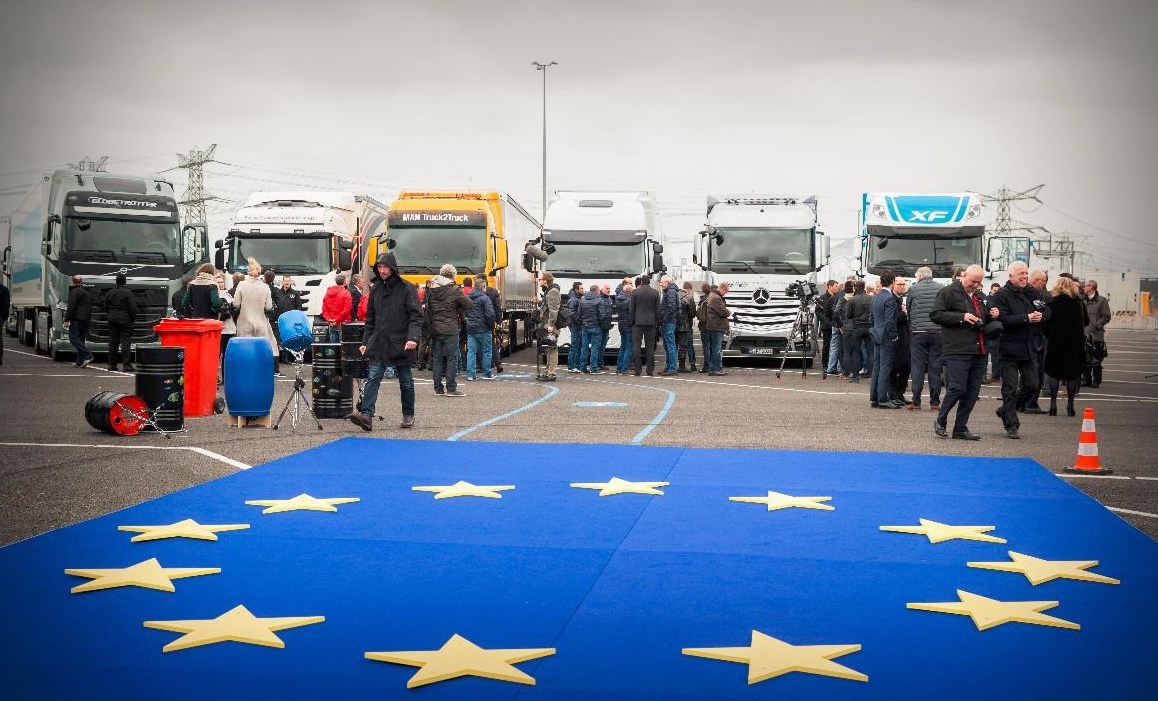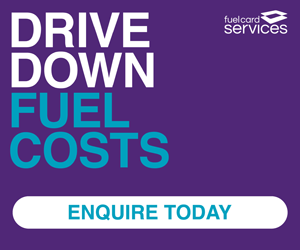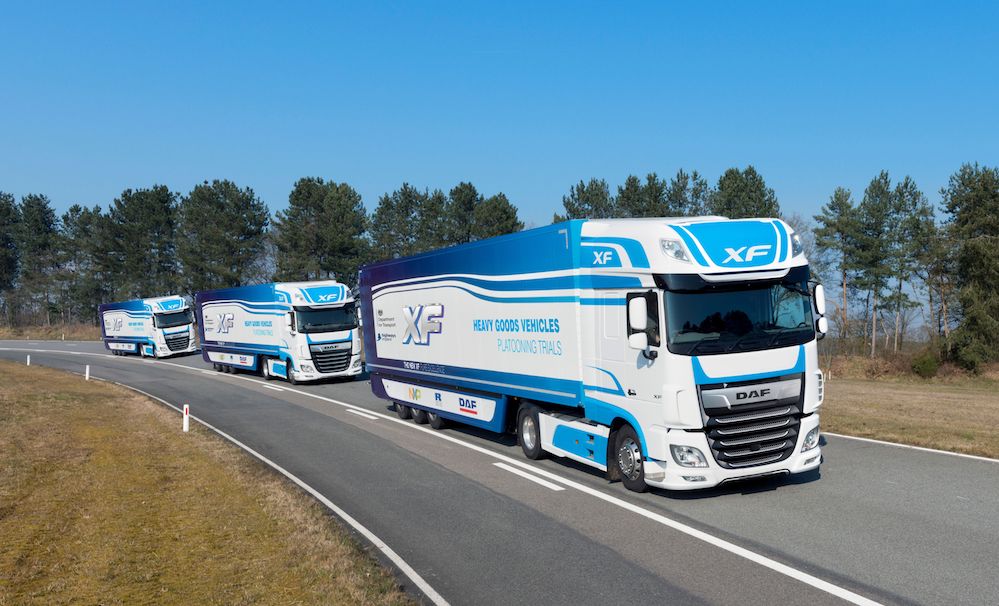In what has been described as a world first, platoons of trucks have crossed national borders to complete the EU Truck Platooning Challenge. Truck platooning uses autonomous driving technologies for two or more trucks to communicate wirelessly and follow in close succession.
The challenge was conceived in 2015 and was organized by Rijkswaterstaat, a body responsible for the the design, construction, management and maintenance of roads and waterways in the Netherlands, and required coordinated cross-border planning, with different countries currently have different rules for platooning. It is hoped that the challenge will act as a springboard to help harmonize platooning rules and technology in Europe.
Platooning allows for shorter gaps between trucks on the road, as the autonomous technology used can react more quickly to changes in speed by the vehicle in front than human drivers can. This means there is more space left for other vehicles on the road and that trucks can use up to 10 percent less fuel by taking advantage of the slipstream created by the truck in front. Traffic is also said to flow better due to the constant speeds and smoother speed changes of platoons.
DAF, Daimler, Iveco, MAN, Scania and Volvo all participated in the EU Truck Platooning Challenge, starting from locations including Sweden, Germany and Belgium as early as March 29. The different platoons made their way across the continent to Rotterdam, Netherlands, where they arrived on April 6.
Each company currently uses its own technology for its trucks to communicate with each other, typically based on Wi-Fi of one form or other, but this prevents trucks from different manufacturers from platooning together.
By way of example, DAF explains that its trucks communicate using 802.11p Wi-Fi, which is designed for use in vehicles. In addition to allowing its trucks to communicate with each other, Wi-Fi-P allows the drivers to talk to one another and is used to transmit a video of what is in front of the lead trucks to those following. DAF also employs radar and cameras to inform its platooning system and says that the combination allows its trucks to respond up to 25 times more quickly than a human-being, with the trucks able to slow down before our eyes could perceive that the vehicle in front is braking.
All the trucks involved in the challenge were tested in advance and the platoons were monitored and filmed from the air so as to provide insights into how other traffic responds to platoons.






